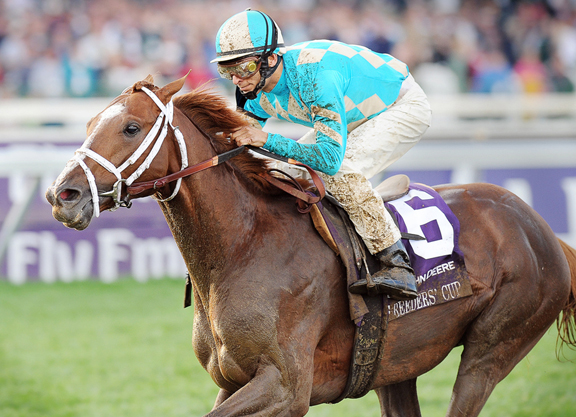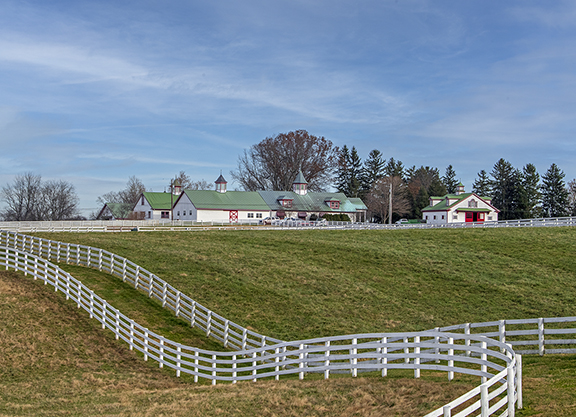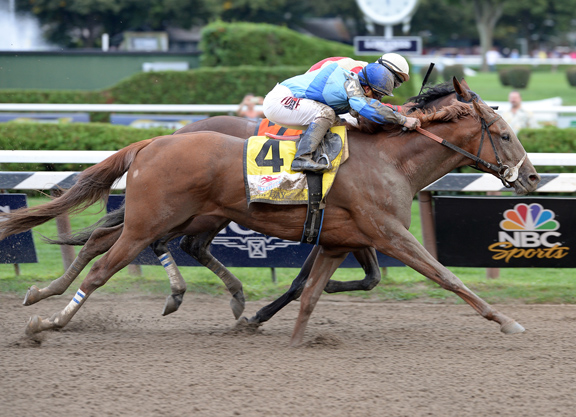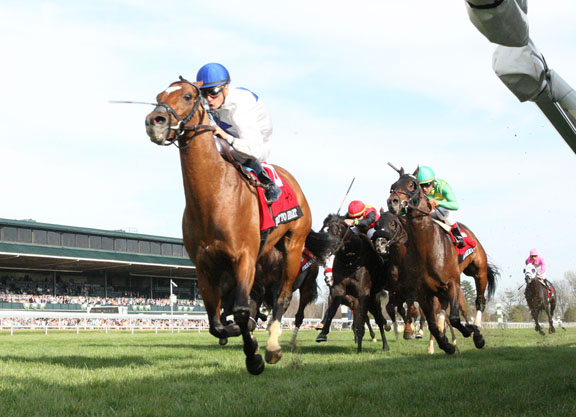On the day that the leading grass juvenile of 2020 rolls the dice on the GI Kentucky Derby trail, here's a really important question for every American horseman. Just what was it about European turf star Mishriff (Ire) that qualified him to run down as irresistible a dirt runner as Charlatan (Speightstown) for the richest prize in our sport last weekend? The answer is so straightforward that it condenses into a single word, yet the implications continue to elude almost everyone in our industry. And that word is: opportunity.
There were two very obvious reasons why Mishriff was given his opportunity in the Saudi Cup. One is that we're all rather more disposed to gamble when the odds of reward are so spectacular; the other is that the race was staged in his owner's hometown.
To be fair, Mishriff had made an encouraging reconnaissance the previous year, while his subsequent deeds in Europe left no doubt of his eligibility in terms of class. So that all figures. Yet the fact is that only those incidental incentives emboldened the kind of experiment nowadays almost manically forsworn on both sides of the Atlantic.
By this stage I have doubtless worn out the record over the shocking lack of adventure lately emasculating the European challenge at the Breeders' Cup, despite the remarkable achievements of those who did gamble on dirt in years past. But Americans have become barely less prescriptive in deciding a horse's surface requirements, carved in stone after a single glance at a pedigree. Both communities, as such, need sit down a minute and consider that of Mishriff.
His sire Make Believe (GB) is a French Classic winner by a British Classic winner, out of a daughter of Arc winner Suave Dancer, himself by a French Classic winner. Mishriff's dam Contradict (GB) is out of a half-sister to two remarkable Irish stallions in Invincible Spirit (Ire) and Kodiac (GB); and if Contradict is admittedly by a Breeders' Cup Classic winner, we all know that Raven's Pass was obliged, that year, with a synthetic surface congenially akin to turf.
The next three dams, meanwhile, are by turf milers Bahri, Kris (GB) and Artaius. Actually Bahri was also sire of Sakhee, whose dam won at Royal Ascot and was by the reputed chlorophyll addict Sadler's Wells. Nonetheless Sakhee was beaten a nose by dirt monster Tiznow at the Breeders' Cup, 20 days after romping the Arc in the mud. In terms of pedigree, the grounds for running Sakhee on dirt were the same as for Mishriff: zilch.
As I'm always saying–and I'm sorry to keep mounting the same soapbox, but nobody else seems to care–what is at stake is the kind of mutual transfusion that has historically energized the breed.
Speed-carrying dirt blood was the foundation of the Coolmore revolution, which continues to percolate through the twin branches of Northern Dancer's European dynasty, via Sadler's Wells and Danzig. Yet where is the rival with enough wit to challenge the same firm's Epsom hegemony by the same formula today, with stallions who–like Northern Dancer–carried their speed two turns on dirt? Anybody remotely serious about prising Classics out of the grasp of Galileo (Ire) and sons should have the big Bluegrass farms on speed-dial. As it is, the Europeans can't even absorb the blatant lessons of recent bargain imports by an accredited turf stallion in Kitten's Joy.
But American horsemen are no less myopic. Yes, some do import European bloodstock–as yearlings, or already in training–but only to target a weaker U.S. program. Few remember how farms like Claiborne and Darby Dan created Classic dirt pedigrees with stallions imported from Europe. Today turf sires in Kentucky are treated as commercial poison, and even when Noble Mission (GB) contrived a GI Kentucky Derby runner-up from his first crop–duly reminding us all that the running style of his brother Frankel (GB) was pure dirt–the next thing you know he has been driven out of town.
Fire At Will (Declaration of War) gets his shot on dirt in the GII Fasig-Tipton Fountain of Youth S. for the same reason as Mishriff last weekend. Nothing to lose, and potentially enormous rewards. His sire, remember, was beaten a nose and a head when trying dirt for the first time on his final start at the Breeders' Cup. But Declaration Of War was obviously far too versatile for his own good, wandering four continents through his first seven years at stud. In fact, Noble Mission is now in the same barn. Someday, too late, breeders in Europe and America will wake up to the fact that the ultimate 21st Century Thoroughbred is being bred in Japan from blood they rejected.
As it happens, Fire At Will is himself a combination of those Danzig and Sadler's Wells highways to Northern Dancer: he's by a son of War Front out of a Kitten's Joy mare. Not even I can pretend that Kitten's Joy is a versatile influence, though it's interesting that his own sire El Prado (Ire) did give us one in Medaglia d'Oro. Regardless, the family tapers into outright dirt royalty, to Rough Shod through Flippers and Moccasin; and it's been seeded with corresponding quality, by Arch, Nureyev (third dam, of course, Rough Shod) and Seattle Slew.
Whether or not Fire At Will takes to dirt is immaterial. The principle can't stand or fall on a single horse. Nobody will be reading too much into that off-the-turf success in the slop last summer, and he's resurfacing from a long hibernation (curiously enough, on the same day as the dirt champ over at Oaklawn). He'll find no hiding place between the speedball Drain The Clock (Maclean's Music) and a two-turn prince in Greatest Honour (Tapit). But I simply hope he runs well enough, so soon after a finishing kick honed on grass was too much even for Charlatan, to make horsemen everywhere stop and think. Just how many other horses might be out there, you wonder, with capacities far exceeding their opportunity?
The post This Side Up: It’s Elementary as Fire Tests Water on Dirt appeared first on TDN | Thoroughbred Daily News | Horse Racing News, Results and Video | Thoroughbred Breeding and Auctions.




